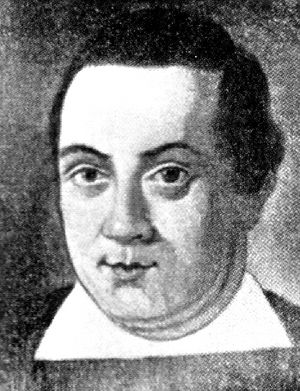Francisco Valdivieso y Prada facts for kids
Quick facts for kids
Francisco Valdivieso y Prada
|
|
|---|---|
 |
|
| Personal details | |
| Born |
Francisco de Paula Valdivieso y Prada
January 10, 1773 Lima, Peru |
| Died | June 9, 1828 (aged 55) Lima, Peru |
| Alma mater | University of San Marcos |
Francisco de Paula Valdivieso y Prada (born January 10, 1773, in Lima, Peru – died June 9, 1828, in Lima) was a very important Peruvian lawyer, judge, and politician. He helped shape Peru during its early years of independence. He served as the Minister of Government and Foreign Relations from 1822 to 1824. Later, he became the president of the Supreme Court in 1825. In 1827, he was also the president of the General Constituent Congress, which was like a special meeting to create Peru's laws.
Contents
Early Life and Education
Francisco Valdivieso was born in Lima, which was then part of the Viceroyalty of Peru. His father, Miguel de Valdivieso y Torrejón, was a well-known lawyer and writer. Francisco studied at the Real Convictorio de San Carlos, a famous school.
He earned degrees in Arts and Theology. In 1791, he became a professor of Arts at the University of San Marcos. He then studied Canon law, which is church law, and graduated in 1796. He even served as a vice-rector and taught Philosophy and Theology at the university. On October 3, 1797, he officially became a lawyer in Lima. He was known for his great knowledge and good judgment.
Working for Peru
In 1807, Valdivieso traveled to Spain. He returned to Peru in 1811 and continued his work in the government. He went back to Spain in 1813. There, he was chosen as one of two representatives for Lima to the Cortes, which was a special parliament in Spain.
In 1815, he was appointed a judge in Santiago, Chile. He sailed from Spain in 1817 but became ill when he arrived in Callao, Peru. This stopped him from traveling to Chile.
Peru's Independence
When the Liberating Expedition, led by José de San Martín, arrived in Peru, many people in Lima supported independence. Valdivieso was one of them. He signed the Declaration of Independence on July 15, 1821.
San Martín's government made him a member of the High Chamber of Justice. He also joined the Junta of Secuestros, a group that managed the property of people who supported the Spanish king and had left the city. Soon, he was put in charge of this task by himself. On January 10, 1822, he joined the Patriotic Society, where he worked as a censor.
Important Government Roles
Valdivieso became the Minister of Government and Foreign Affairs of Peru. He held this important job from July 22, 1822, to July 17, 1823. He even ordered the removal of Minister Bernardo Monteagudo after people complained about his actions in Lima. For a short time, he also served as the Minister of Finance.
After President José de la Riva Agüero was removed from office, the Constituent Congress allowed Valdivieso to temporarily lead the country in areas not affected by the war. This was while Venezuelan General Antonio José de Sucre, who worked with Bolivar, was in charge of military power. This temporary leadership lasted from June 23 to July 17, 1823, until José Bernardo de Tagle became president.
Later Achievements
After Peru won important battles like Junín and Ayacucho, Valdivieso was appointed to the Supreme Court of Justice. He became its president in 1825. He was also part of a group that worked on creating new laws for Peru, like the Civil Code and Penal Code.
In 1827, he was chosen as a representative for Lima again. He joined the General Constituent Congress and served as its president from August 4 to October 4, 1827.
Francisco Valdivieso y Prada passed away in Lima on June 9, 1828. He played a key role in the creation of independent Peru.
See also
 In Spanish: Francisco Valdivieso y Prada para niños
In Spanish: Francisco Valdivieso y Prada para niños

